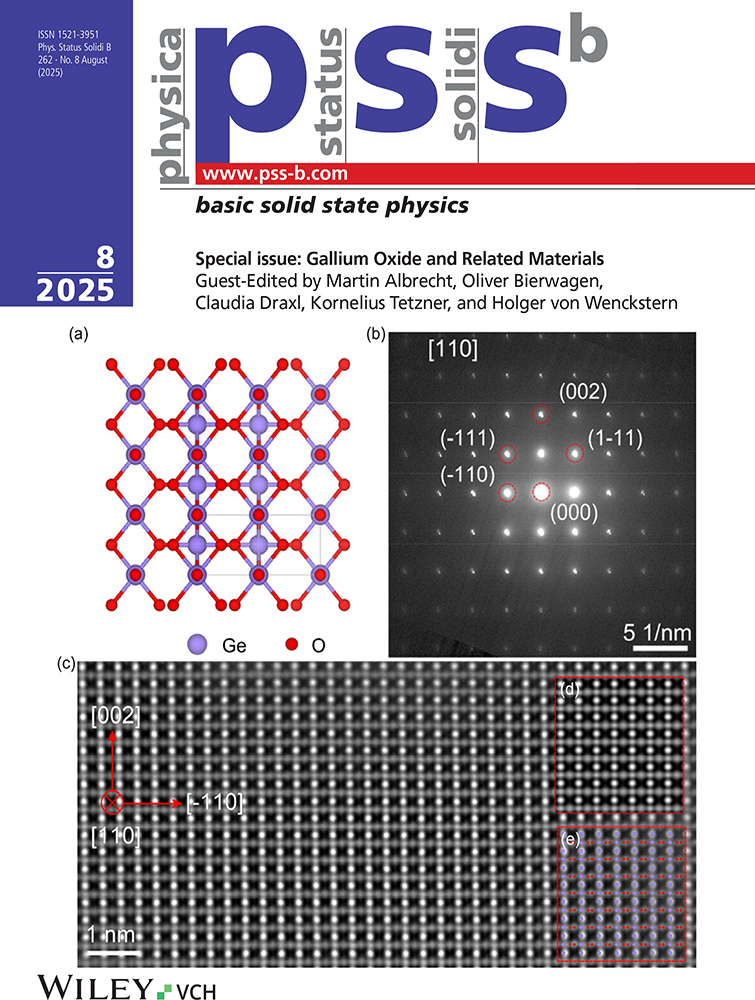Recalculations of Madelung Potentials and Polarisabilities of Ions in Stoichiometric Rutile (TiO2)
Tokiwadai, Hodogaya-ku, Yokohama, 240, Japan.
Bradford BD 7 1 DP, West Yorkshire, Great Britain.
Abstract
enThe Madelung potentials in stoichiometric rutile (TiO2) are calculated and found to be 29.53 eV at the Ti4+ site and −41.20 eV at the O2- site. These potentials lead to the value of 141.5 eV for the Madelung energy per TiO2 “molecule” and also the value of 4.810 for the Madelung constant. Using the Madelung potential at the Ti4+ ion, the electronic polarisability of the Ti4+ ion is estimated to be 0.368 Å3. This result is used to determine the ionic polarisability of the Ti4+ ion and the electronic and ionic polarisabilities of the O2- ion. The electronic polarisability of the O2- ion is found to be large in value compared with that in other oxides. The possible connection between polarisability and defect structure formation in nonstoichiometric rutile is discussed.
Abstract
deEs werden die Madelung-Potentiale fur stöchiometrisches Rutil (TiO2) berechnet. Sie betragen an der Stelle des Ti4+ 29,53 eV und des O2-, −41,20eV. Die gesamte Madelung-Energie pro TiO2 „Mole-kül”︁ ist 141,5 eV entsprechend der bekannten Madelung-Konstanten von 4,810. Aus den berech-neten Potentialen ergibt sich eine elektronische Polarisierbarkeit von 0,368 Å3 für Ti4+. Die elektronische Polarisierbarkeit des O2- ist größer als in den meisten anderen Oxiden. Die ionischen Polarisierbarkeiten werden berechnet. Die Korrelation zwischen der elektronischen Polarisierbarkeit und der Formierung von der Defektstruktur in nichtstöchiometrischem Rutil wird diskutiert.




